Slowly, but very surely, new sailing season will have its breakthrough. That is despite the fact of Corona, travel restrictions and the so-called “social distancing”. People want to use their boats, enjoy their leisure time off at sea and get some of that precious recharging which I feel is much needed after more than one year in that crazy lockdown-life. Same goes for me.
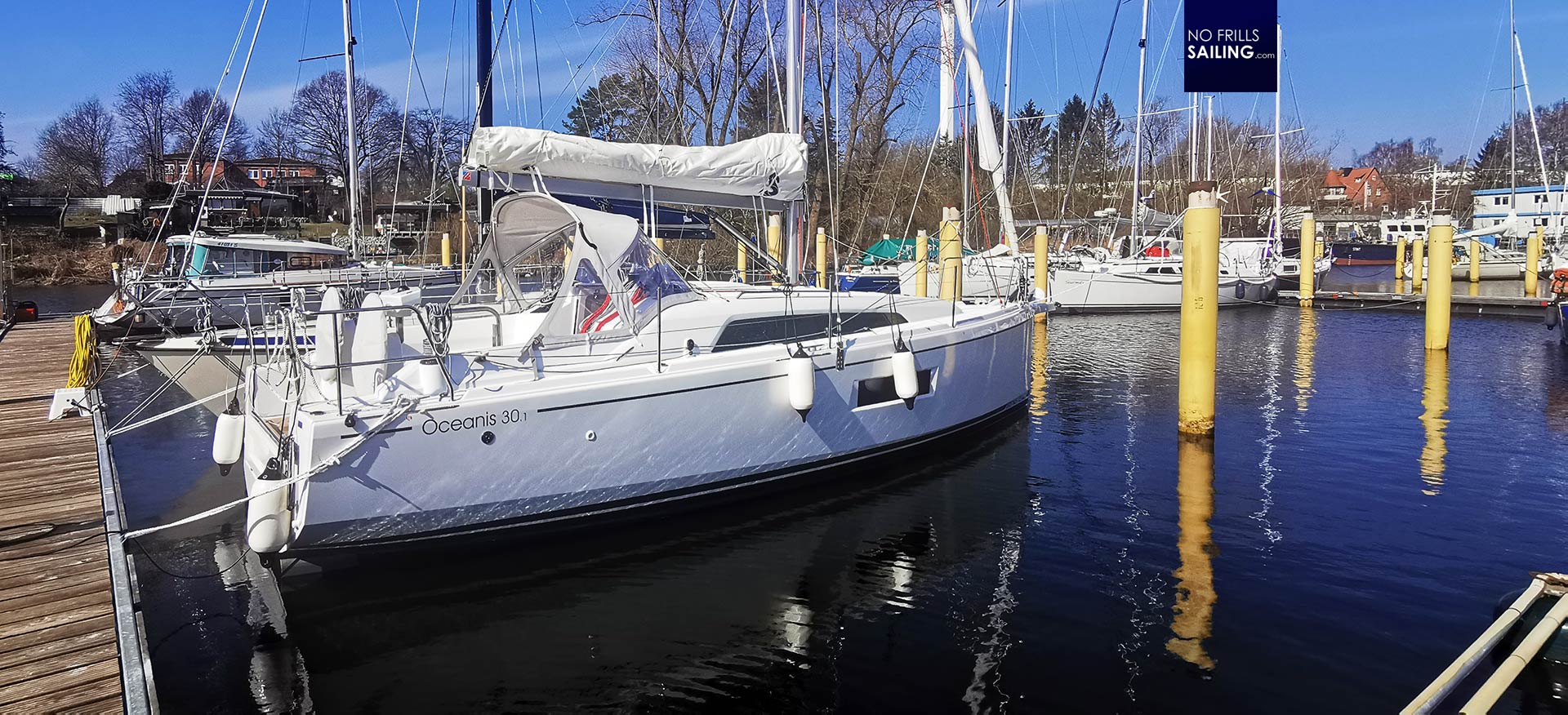
You may have read my previous articles giving an inside in my job working for a Beneteau dealer, this very article is connected to another delivery of an Oceanis 30.1, this time near my hometown of lovely German Hanse ex-capital Luebeck. I don´t want to talk about my job in this article but dive a bit deeper into navigation and safe negotiating a boat through pitch black night, a follow-up to my “Harbour Hustle”-article about nightly boat travel I published some years ago while I was doing my first skipper´s certification.
Preparing for a night out sailing
Now, the task was to take over a freshly delivered boat after commissioning by our partners to her new home port. The Oceanis 30.1 is a small pocket-cruiser I pretty much love for her small size but huge sailing potential. She is a full-grown cruising boat offering all amenities you´d seek in a family boat if you are a party of two with maybe one or two (small) kids. I was blessed to being allowed to sail the prototype of this boat to Sweden (shockingly this is two years ago now). So here she was, brand new, shining and sparkling white in her commissioning berth. Her name is APRÈS.
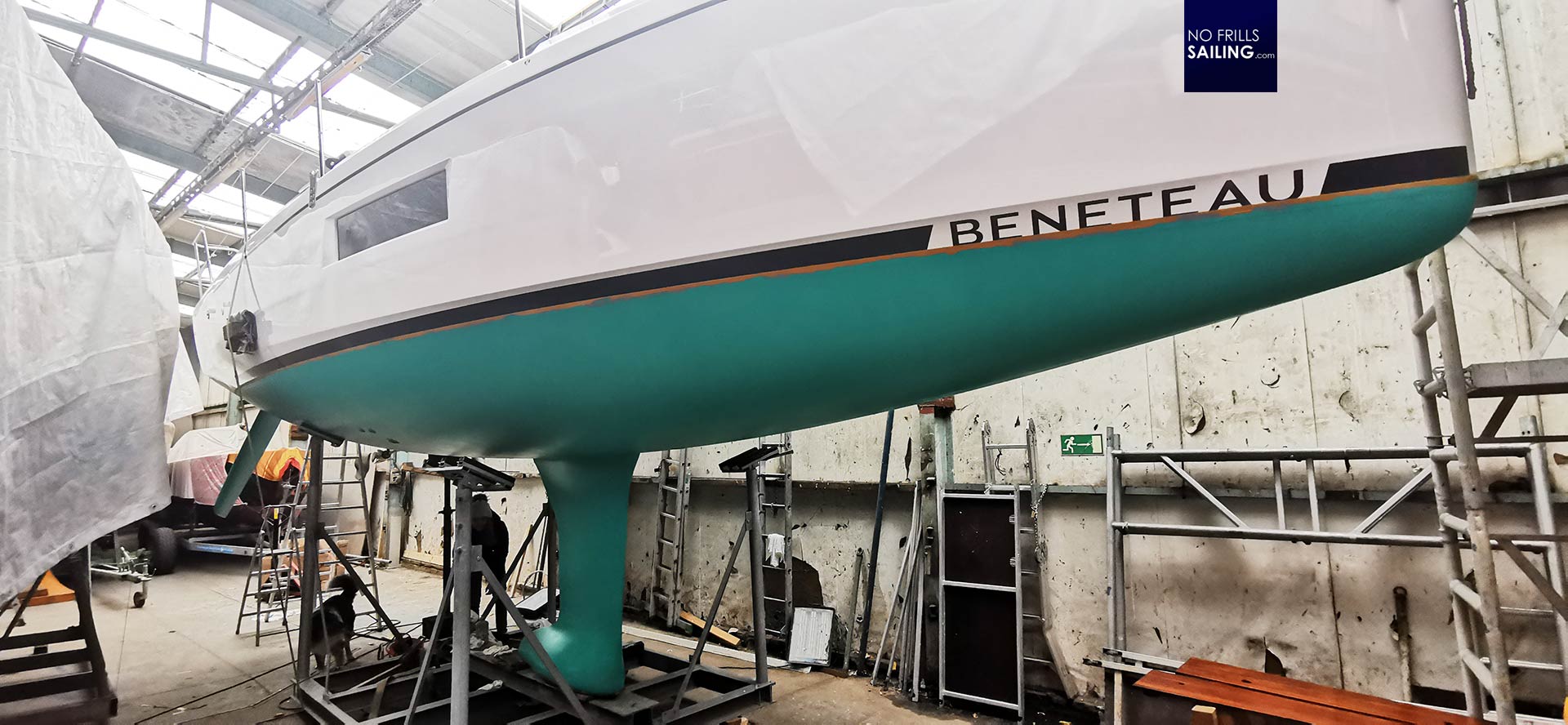
I was accompanying her commissioning since she arrived at Luebeck yard some weeks ago and oversaw the works like antifouling and rigging of the boat. Now she was put to water, mast stepped and the boat had been readied by our partners to a seaworthy state. Time to bring her to her home port which is the ancora marina “just around the block”, a 5 hour trip downriver the Trave and across Luebeck Bay. So, how did it happen that I casted off in pitch black darkness? Well, first thing a good skipper does when a new sailing trip is coming up is … checking weather.
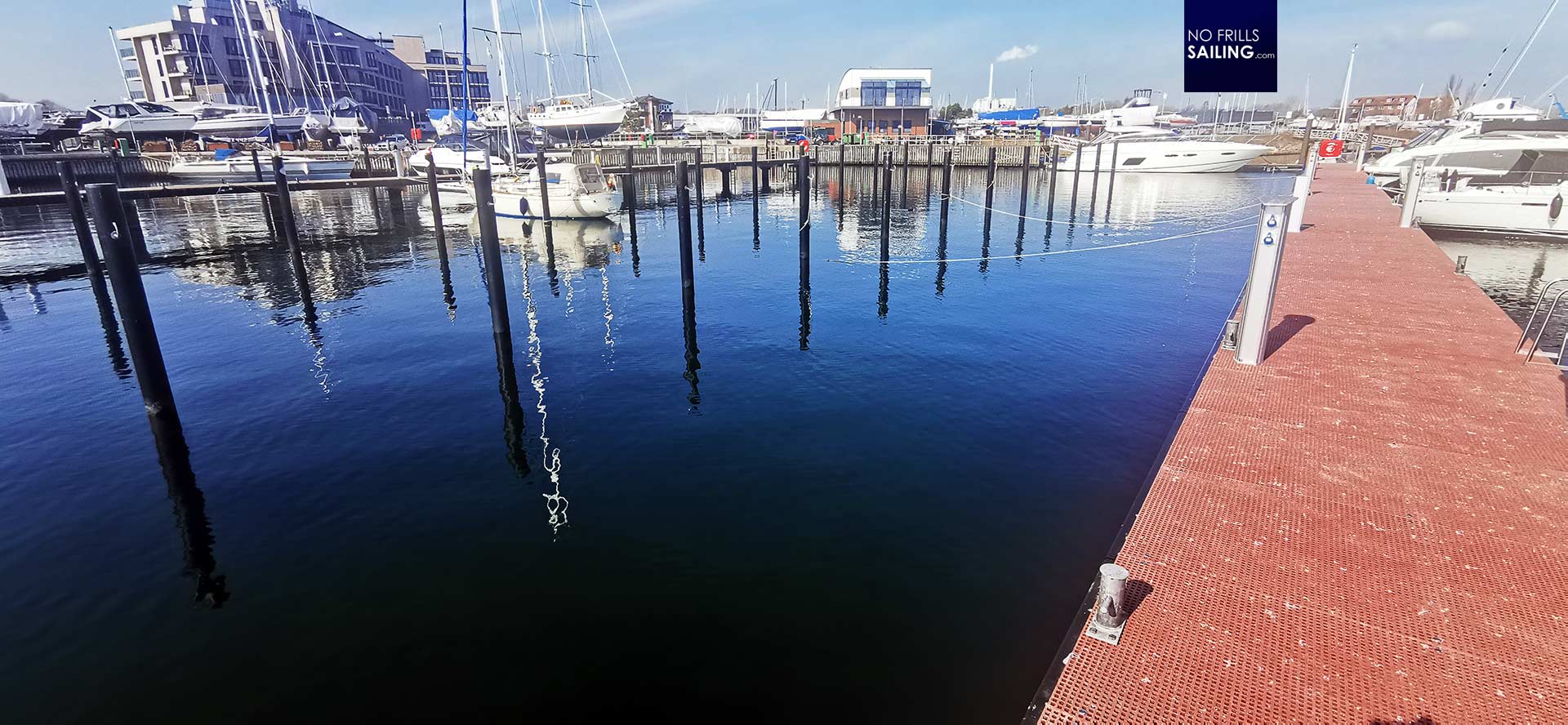
The forecast was unfortunately telling me that – if I didn´t wanted to have a 20 knot force 5 strong wind with a passing cold front, endless rain and freezing temperatures – I should be leaving soon. Very soon. So I persuaded my co-skipper to come to the boat right after quitting time while I readied the boat. Second thing after weather forecast is – if available – a check of the destination in person if possible. So I drove to the marina and walked up to the pontoon and the very berth the boat was destined to reach. In this I could check the entrance, the approach, possible hazards or obstacles. If this isn´t possible: Check the charts, browse the internet or at least put in the biggest zoom in your plotter and get accustomed to the destination you are heading to. Of course I as well checked our route: Notwithstanding that this area is my “home”, I nevertheless checked if the buoys of the waterways are working or not and so forth.
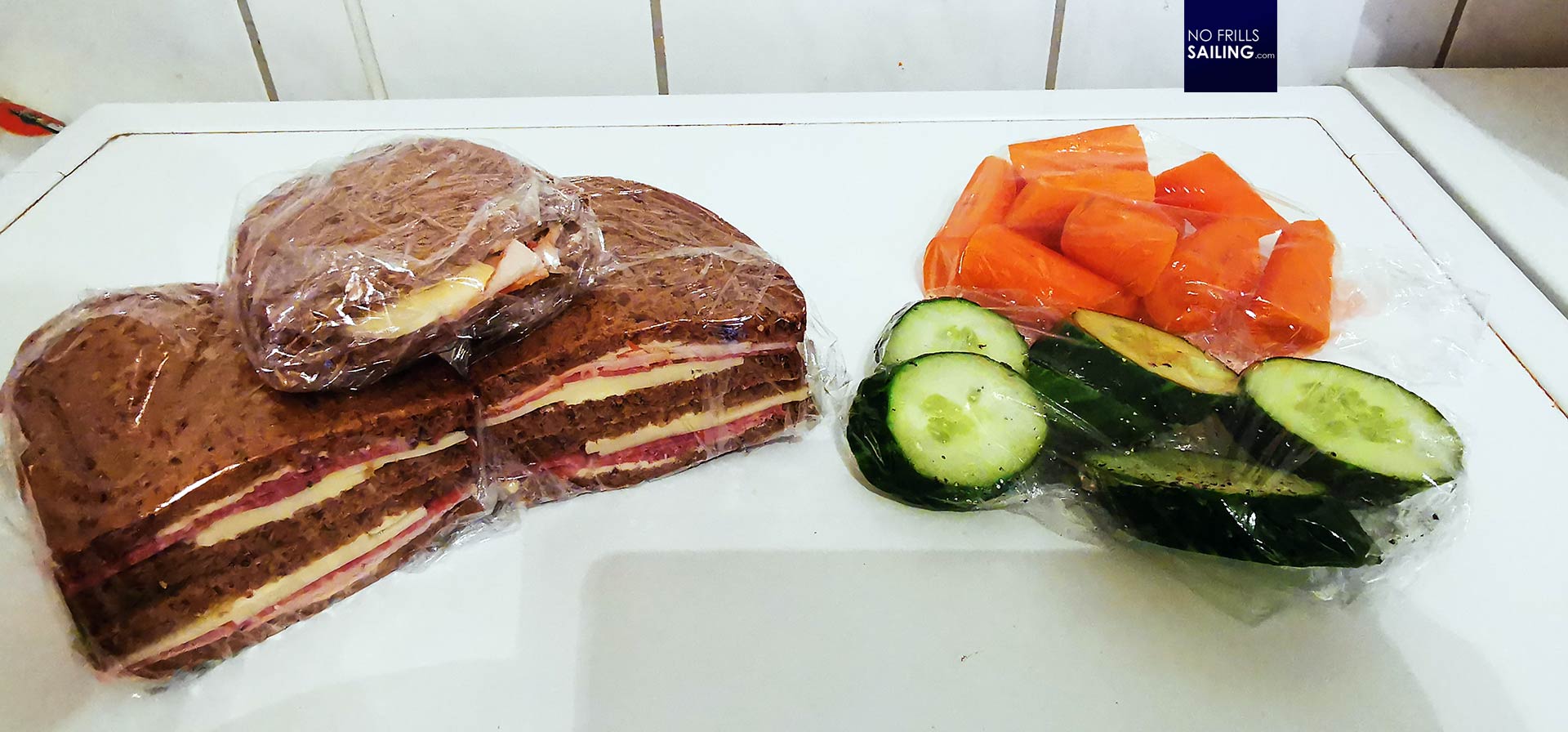
This little first cruise of 2021 was comprised of two main parts: First 10 miles is a 2 hour engine-powered downriver ride to the Baltic Sea, followed by another 10 miles across the Luebeck Bay. After knowing that weather would be a bit awful, I prepared a bunch of sandwiches, the “German Klappstulle”, some crispy fresh veggies and a thermos flask full of burning hot peppermint tea with a load full of thick chunks of fresh ginger. Packed in also warm clothing and simply everything needed to tackle the 20 miles transfer cruise.
Casting off in pitch black
Sailing in dark night is a favourite of mine. I simply love it: The tranquility, the clarity and honesty. I do not feel frightened at all, in contrary, sailing at night sharpens my senses and calls for an even greater sensibility of all senses, diminishing the vision and fostering the other senses like hearing and even smelling. Don´t fear the night – be vigilant, open minded and level-headed. This is how I boarded APRÈS and readied her for casting off. We switched off all lights in the salon, all but the redlight at the nav station so that our eyes got the chance to adapt to low light vision.
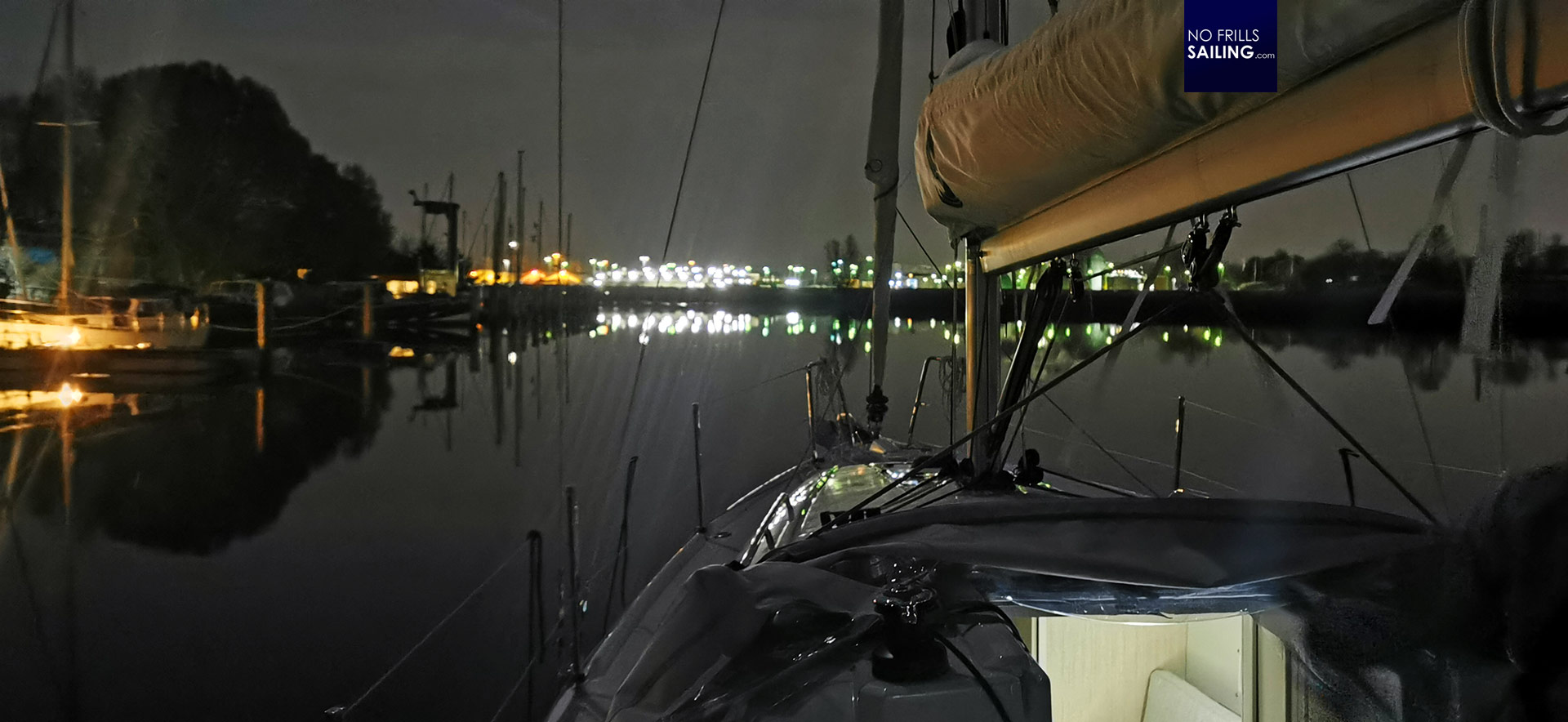
This is how we left Luebeck commissioning port. Readily to hand I´ve had my new LED-flashlight which is an absolute must-have when sailing through the night: Checking nearby buoys for example can only be done by a very strong flashlight as most not-working buoys are equipped with reflecting paint or cat-eyes. A flashlight is also necessary to check for the sails trim at night. Having the engine run at steady 1.900 rpm the boat was making 5 knots over ground, which is a nice cruising speed – fast enough to reach the destination but also slow enough to being able to stop at a notice or correct courses if something happens. Steaming downriver the Trave from my home town of Luebeck is something I have done multiple times now. I love the scenic beauty of the natural reserve surrounding the river and I am also very familiar with it. But I´ve never done the cruise at night so this was a premiere for me as well. Due to Corona virus and the late time that day there was absolutely nobody out that night – even AIS did not show any contacts. It was calm and nice, well, apart from the humming sound of the engine of course.
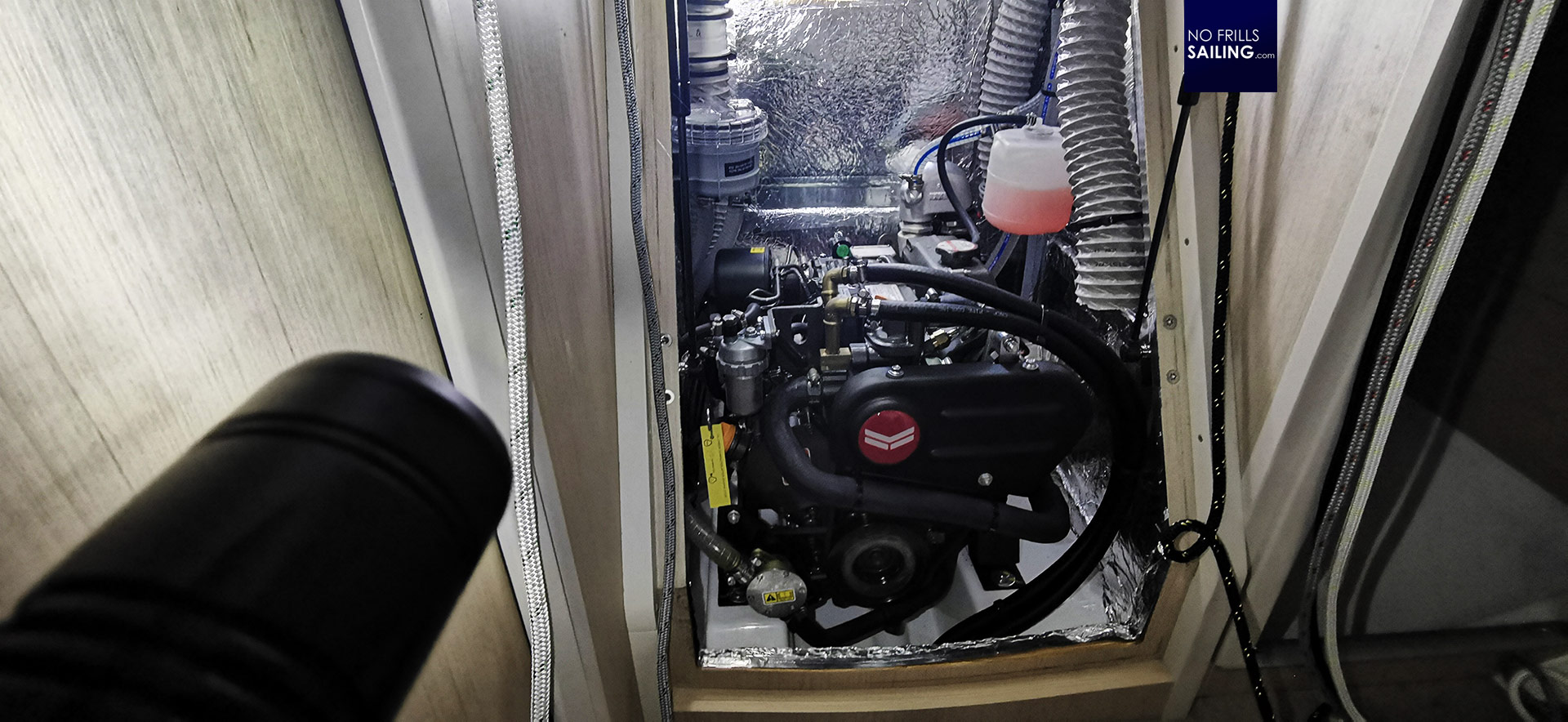
As this was a kind of shakedown cruise of this boat I did have some tasks to fulfill as well. I first checked the engine, opened the staircase and checked for any leaks in the secondary colling circle, prior to casting off I already had retightened all hose clips, filled up destilled water and some Diesel. It was pure bliss: Calm, warmer than expected and a very new perspective onto my home turf sailing area.
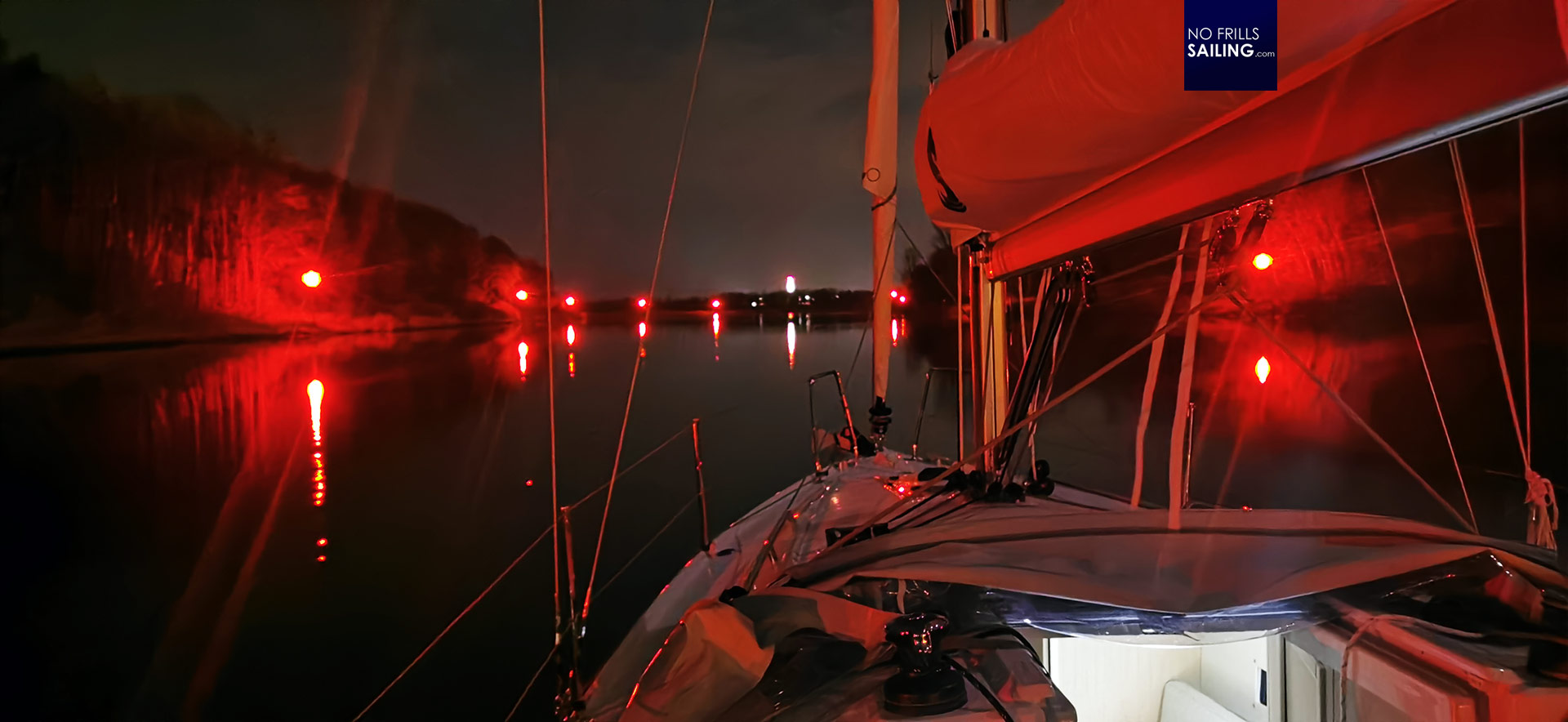
The river Trave once used to be one of the most important and busiest waterways of the historic German Hanse. For 500 years the City of Luebeck ruled this first true European Union of free citizen merchants who dominated Baltic sea trade and got rich and richer to a point where they even had the English Crown as pawn in the city hall (this chamber is to be visited even to this day). Now, knowing this, these last 10 miles from Luebeck to the estuary of downriver is secured by working buoys which made it easy to steer – nevertheless we´ve had our eyes open. Loads of Swans slept in the river and we´ve seen plenty of floating objects.
The beauty of nightly sailing
The first few miles are dominated by pure nature. North of Luebeck thick forests are still common place and so are the banks of the river Trave: Not one light, no house, no nothing, just pure nature. We steamed along and enjoyed the moderate temperatures which had been far warmer than forecasted. A hooray to the Klappstulle!
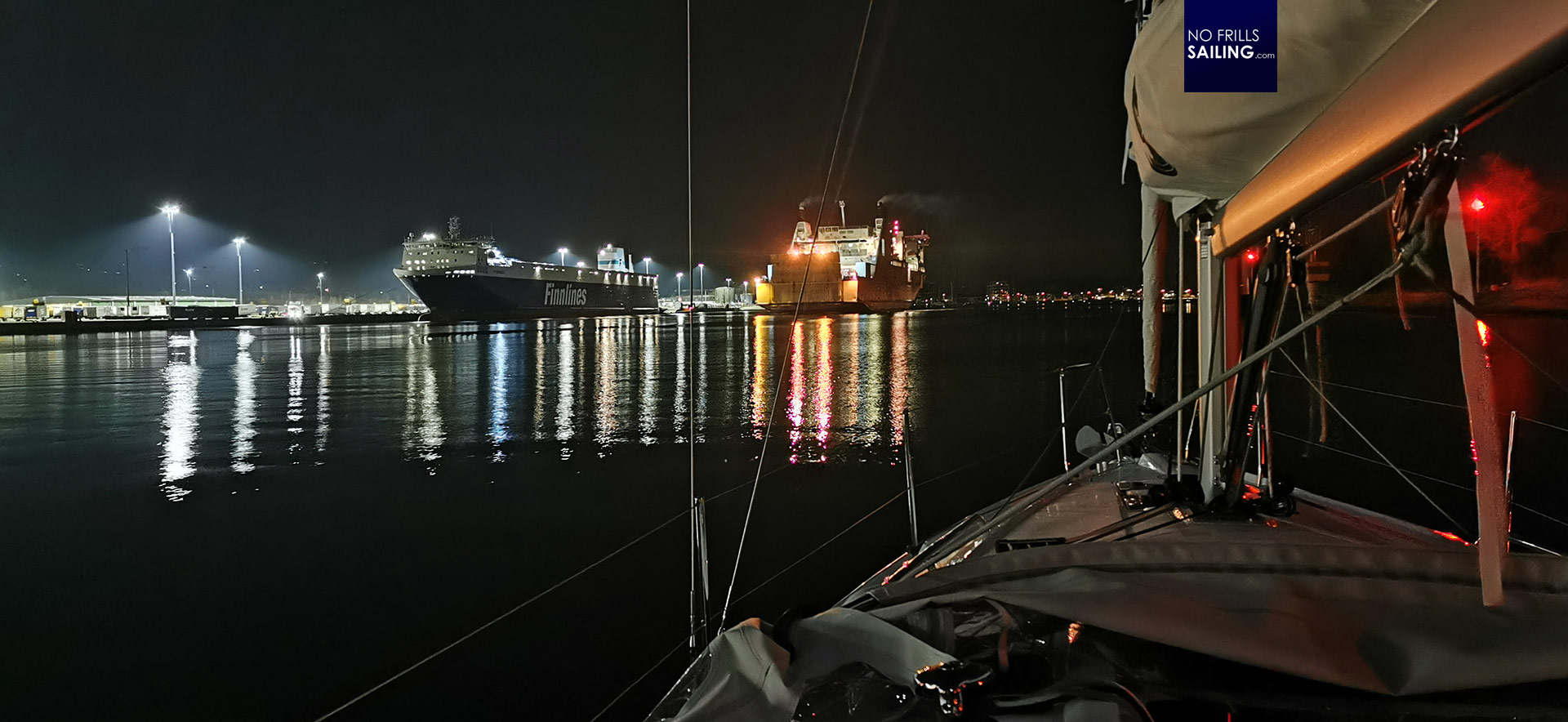
Nearing the estuary of Trave river to the Baltic Sea we approached the wide compound of Luebeck port authority – to this date still one of Europe´s biggest trans-shipment centers for the paper industry. A stark contrast to the last hour of the trip: Lots of lights, all-round-signals, sirens, big cranes turning, trucks loading and unloading, bustling around – 24 hours a day. Ships moor alongside, brightly illuminated and some of them steaming in stand-by mode.
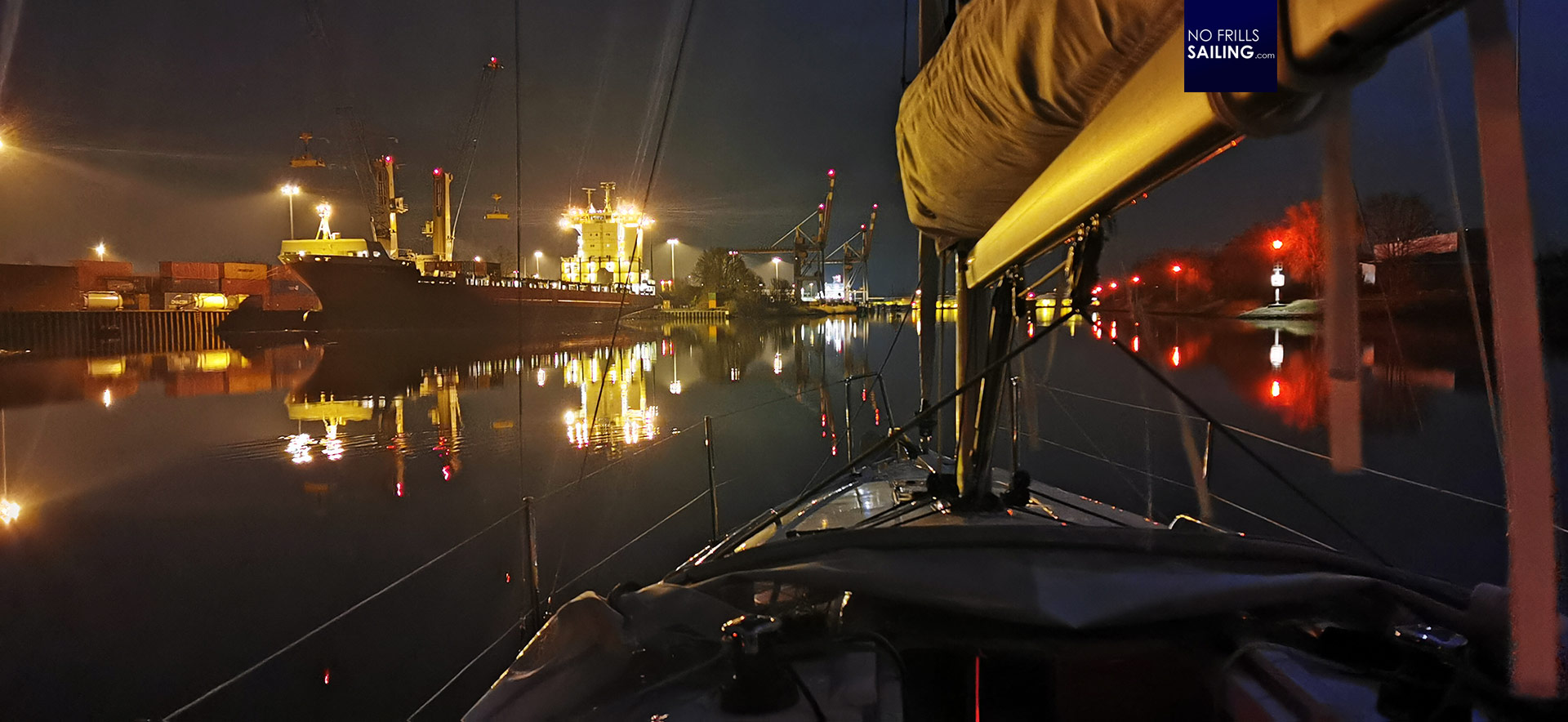
Although it was very calm, we´ve had to be vigilant. These ships have the right of way and won´t care for a small pleasure craft as ours, so I checked well in advance if a big one was about to move. Better keep out of their way, I thought. And just as if I had it seen coming, right behind us as we had passed, a big one was casting her lines and slowly, but surely, increased speed. Travemuende is one busy ferry port for trans-scandinavian ferryboats to Sweden, Finland and the Baltic states. I knos this because back in the day I did the practical skipper exam (LINK) exactly in the harbour – negotiating between the coming and going ships.
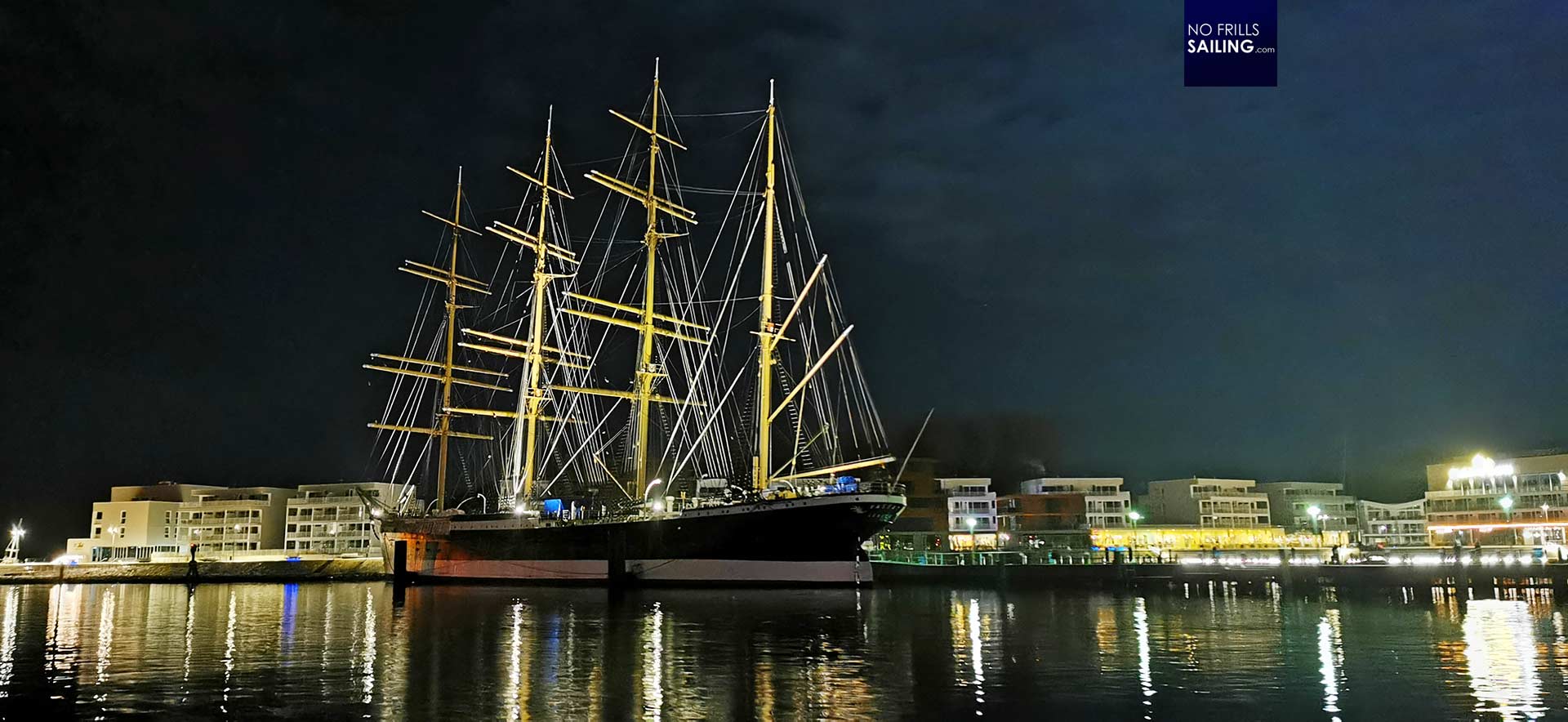
We finally passed the main maritime attraction of Travemuende, the Flying-P-Liner PASSAT which is moored permanently here as a museum ship. This square rigged fast transport vessel greets arriving sailors as well as it says Goodbye to leaving crews: Her proud bow pointed towards the sea just as if she wanted to go out again, set sails and start another fast run around the Cape Horn, fully loaden with coal, wool or other valuable goods. A brave ship and a good harbinger, we watched her stay behind in awe and respect. Always a great sight though!
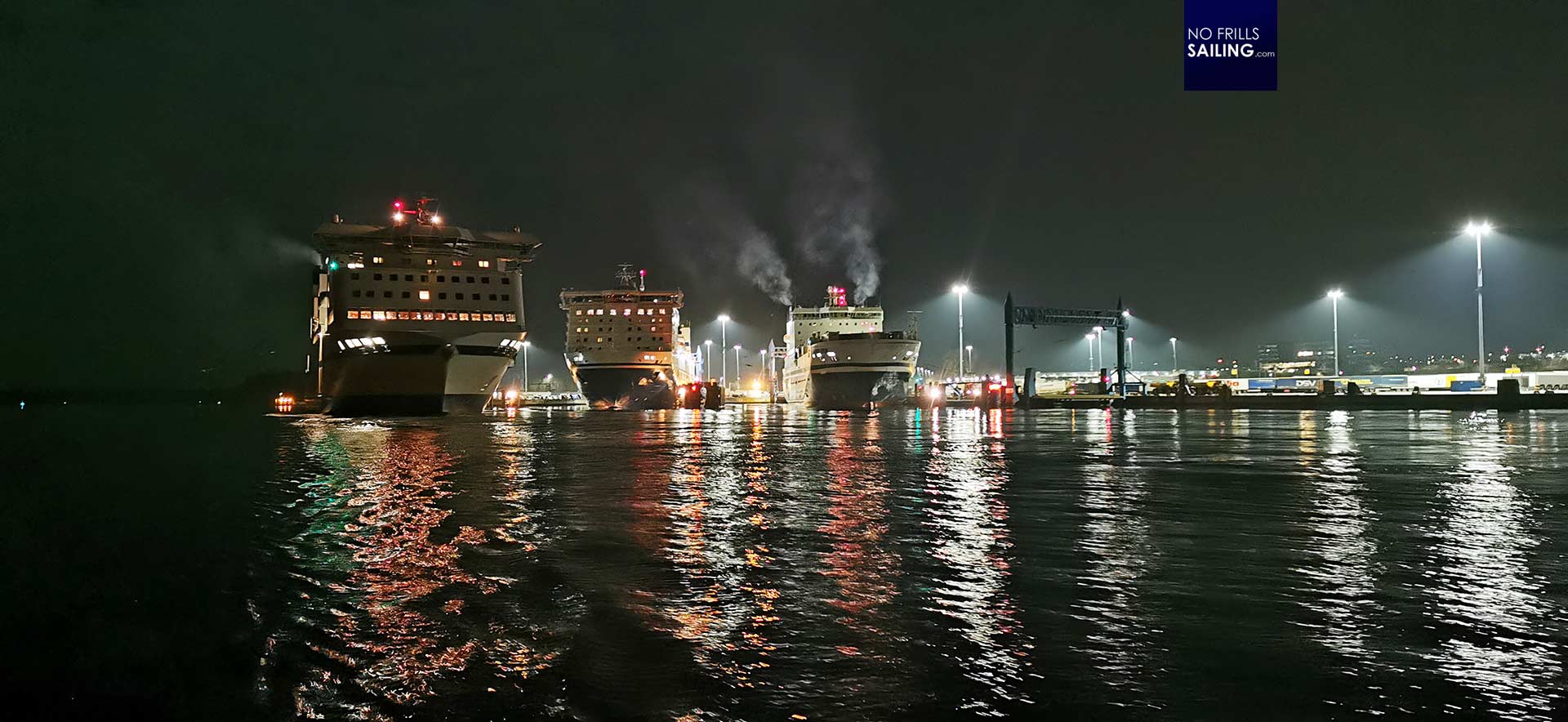
I kept to the left side of the waterway: I am always sailing under the motto “least stressful for everybody involved”. That means no stress for me, my crew, my boat as well as no stress for any other one on the water. I knew that right after leaving Trave estuary I would turn left on a westerly course towards Neustadt – our destination – so cut time in front of the big ferry. It worked perfectly: The ferry Captain was in increasing speed steadily and as I turned West out of his way, he dashed past me, I know he was happy for not having any trouble.
Finally out for the first time
Now, here we were: Out for the first time in 2021. I shouldn´t look back in anger to the Corona-year 2020 as I was able to pull off some very exciting sailing trips, like the Adriatic sailing delivery of an Oceanis 46.1 to Greece or my perfect sailing trip in a Bavaria 37 C through the Gulf of Biscay and the English Channel. Nevertheless, with all the Covid restrictions it kind of felt awkward last year and to be honest, 2021 did not start any better. So setting sails nor for the first time was a very, very emotional moment for me. Sadly, forecast this time was wrong again: Instead of 8 knots true (which would have made us go 3 or 4 knots which is perfectly fine for a smooth delivery cruise at night) we received … well … zero knots true. The Baltic Sea was as numb as a pool of lead, with a pale moonshine reflecting on its surface. I pulled up the sails one time just to check if everything was functioning well, which it did, and put them down again. Motoring for the rest of the trip was a matter of two more hours, sadly we realized that our thermos flask could only hold hot liquid worth of four cups of tea. Now, as the cold of the night around midnight was creeping up underneath our oilskin a good old cup of tea would have been just perfect.
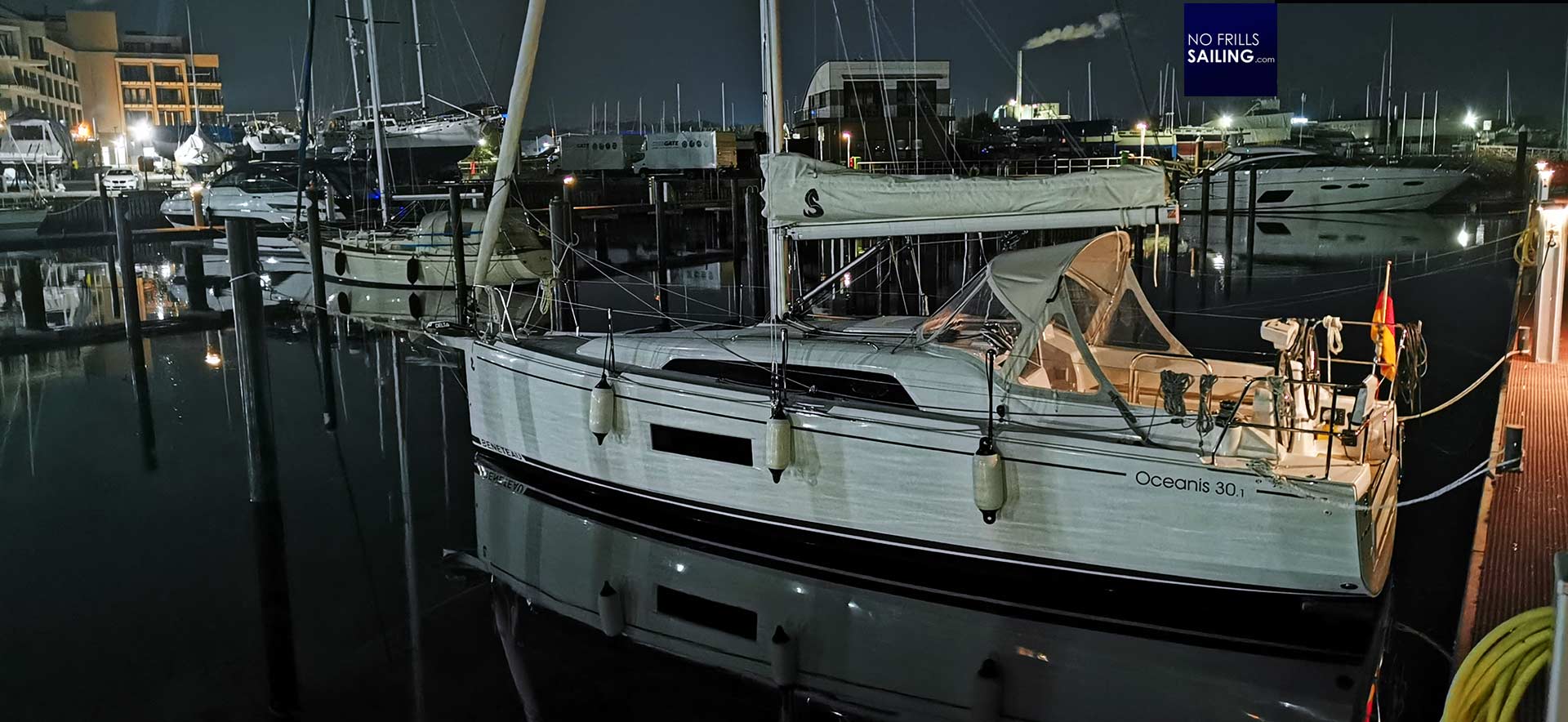
We entered the waterway approach to Neustadt with non-working buoys, detected well-ahead by my strong LED-flashlight. Landing the boat safely to her new home berth was a moving moment. “That´s boat number 5 in 10 days”, I told my co-skipper, referring to the previous three Oceanis 30.1 and one First 24 I handed over the week before at the Lake of Constance. This sailing trip maybe wasn´t as spectacular or memorable as it could have been, nevertheless, it was a good, lucky trip of an otherwise happy ship. The owner texted a nice “Well done, thanks!” and I am looking forward to some more sailing trips out on this one in the coming weeks. Sailing in a pitch black dark night? Truly a fervor of mine.
You may also like to read these related articles:
All related to “Skipper´s Essentials”
Anatomy of a grounding
